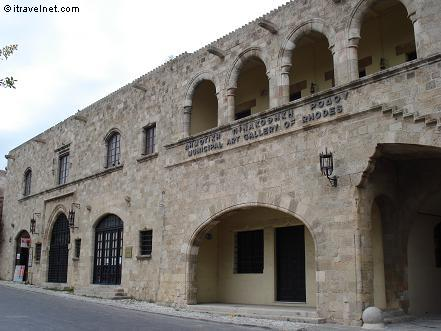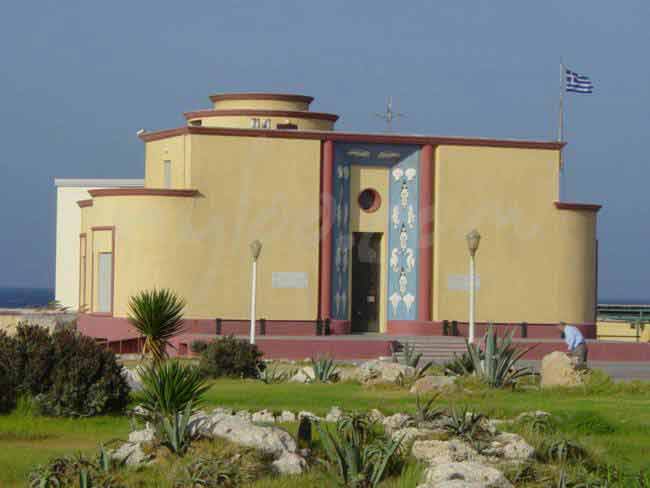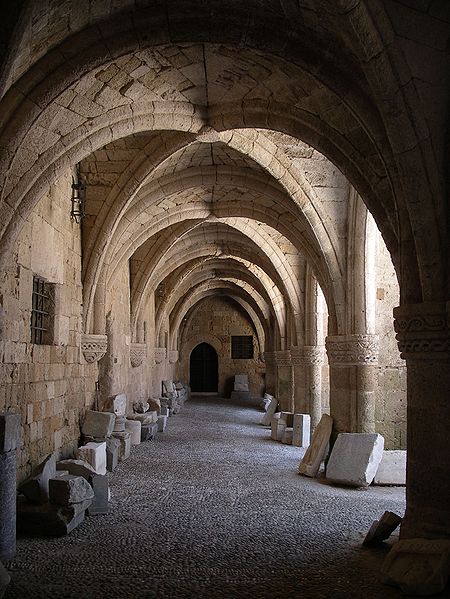|
CULTURAL
ACTIVITIES(*)
Rhodes is a mine of culture. Below
are just three of the places delegates might want to visit
whenever there is a bit of free time from the conference.
The
Municipal Art Gallery of Rhodes

The Municipal Art Gallery is housed
in the first building on the right, as visitors enter the Old
Town of Rhodes through the Freedom Gate. An old two-storey
building on Simi Square, this municipal gallery has a Medieval
architecture and arches on the ground floor that lead to the
entrance. This gallery belongs to the Museum of Neohellenic Art
of the Municipality of Rhodes.
Inside the gallery, visitors have
the opportunity to see some of the most representative works of
the Greek modern art. Works of Fotis Kontoglou, Spyros Vassiliou,
N. Hadzikyriakos-Gikas, Yannis Spiropoulos and of other
prominent Greek artists are featured there, in this highly
representative museum of the 20th century Greek art. Although
the museum owns about 690 pieces, only 90 of them are available
to public disposal.
The founder of the Municipal Gallery
of Rhodes was Andreas Ioannou, a historian of Modern Greek Art
and the Prefect of the Dodecanese in 1948. Studying the modern
Greek art since the 1950s, in a time when even the National
Gallery of Athens would focus its interest in the 19th century,
Andreas Ioannou established this gallery with the aim to
systematically own and protect the work of modern artists.
The Aquarium
of Rhodes

The Aquarium of Rhodes is housed in
the building of the Hydrobiological Station, within the limits
of Rhodes city. The building was constructed in 1934-36, during
the Italian occupation, to house the Institute of Biological
Research. After the liberation of the Dodecanese islands, it was
named as the Greek Hydrobiological Institute and also included
an aquarium and a museum.
The aim of the Aquarium is to present and preserve the species
of the Mediterranean Sea. It constitutes of a circular area with
13 big tanks and 15 small ones.
Fish and organisms from the
Mediterranean are selected anddisplayed there in public view.
The tanks are made of cement and their bottoms are covered with
sand, shingles and corals. The water in the tanks is mainly
filtered sea water.
These tanks host different kinds of sea species, such as sea
turtles, dolphins, sharps, seals, mollusks, echinoderms, crabs
and many kinds of fish. Apart from these tanks, there is also a
big underground area that serves for stocking new species or sea
animals that need special treatment and protection. This place
is frequently used to hospitalize sea turtles and seals from the
nearby waters.
The museum displays embalmed sea species, like dolphins, sea
turtles and sharks that are certainly worth to visit. The
Hydrobiological Station of Rhodes runs today a lot of research
on the oceanography of the Dodecanese islands and works as a
model research unit in the Mediterranean area.
The
Archaeological Museum of Rhodes

The Archaeological Museum is located
in the Old Town of Rhodes. It is housed in the Medieval building
of the Hospital of the Knights, in the Palace of the Grand
Master. The construction of this building began in 1440 by Grand
Master de Lastic and it was completed in 1948 by Grand Master
d'Aubusson. The building was renovated in the early 20th century
by the Italians, as was the whole Medieval Town of Rhodes.
The Archaeological Museum contains
today findings from excavations all over the island and some
small islets of Dodecanese. Visitors can see a collection of
vases, figurines, small objects and tomb groups from were found
in Ancient Ialysos and Ancient Kameiros and date from the
Geometric till the Roman times. There are also mosaic floors
from the Hellenistic times and funerary slabs of the Knights.
(*)
Information taken from www.greeka.com |